ホーム → 文法 → DoJG main menu → 基本 → Basic Page 536
Conjunction
| A coordinate conjunction that is used to list two or more items (nouns or noun phrases) in an inexhaustive fashion. | And |
| 【Related Expression: と1; とか】 |
(ks). 山田さんや小川さんが来た・来ました。
Mr. Yamada and Mr. Ogawa (and others) came.
(a). 山本さんやスミスさんがテニスをしている。
Mr. Yamamoto, Mr. Smith and others are playing tennis.
(b). 僕はビールやワインを飲んだ。
I drank beer, wine and other things like that.
(c). 土田さんは大川さんや鈴木さんに手紙を書いた。
Mr. Tsuchida wrote a letter to Mr. Okawa and Mr. Suzuki (and others).
1. や is used to combine two or more nouns or noun phrases. It cannot be used to combine predicates. Thus, (1) is unacceptable.
Instead of (1) we have to use たり~たりする to express an inexhaustive listing of predicates, as in (2).
(⇨ たり~たりする)
2. NounやNoun can be used as a noun phrase in any position where a single noun can be used. It can be used as the subject, as in Key Sentence and Example (a), or as the direct object as in Example (b), or as the indirect object as in Example (c).
3. NounやNoun cannot appear in the position of X in the XがYだ construction, because が in XがYだ is a highly exhaustive listing marker.
(⇨ が1)
This idea can be conveyed using the construction in (4):
【Related Expression】
とか is used to make a rather general, inexhaustive listing of items as examples, whereas や is used to make an inexhaustive listing of items related to a specific time and place. Consider the following examples:
[1]